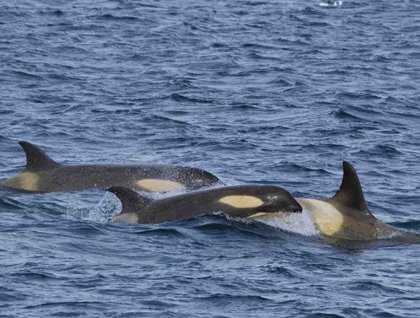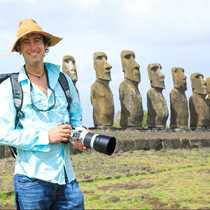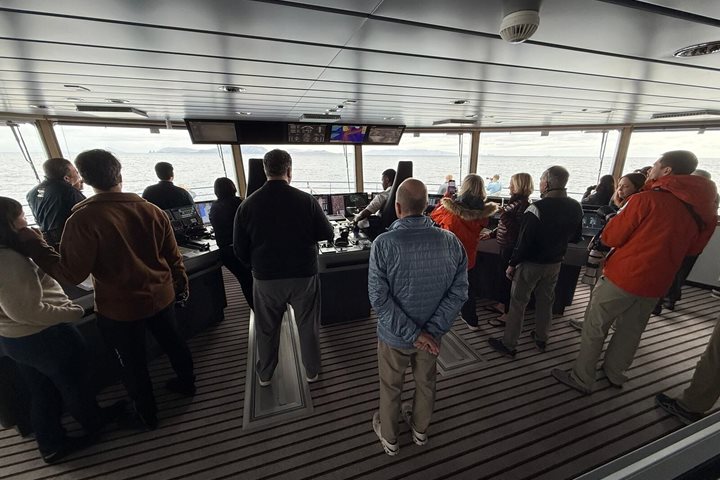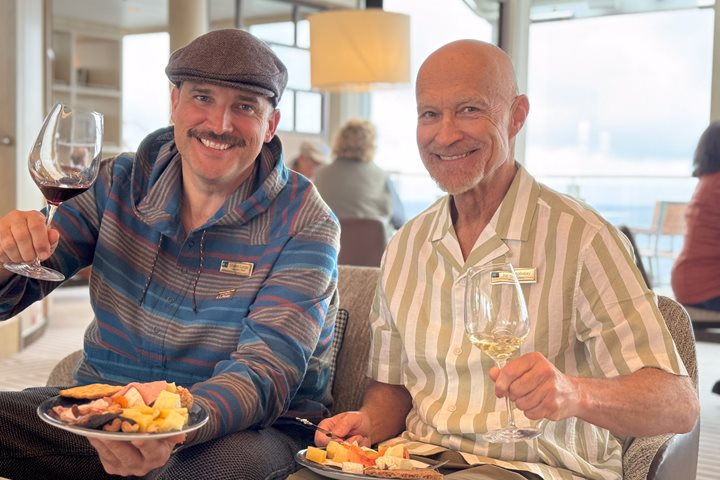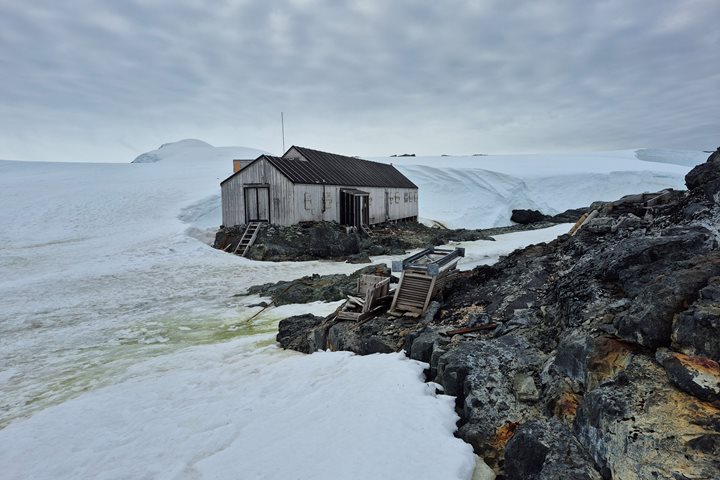Today has been a true delight with thousands of penguins, more than a dozen killer whales, and a beautiful sunset. We stepped foot on the continent of Antarctica, which for many was their 7th continent. This isn’t just any landing though, this is the famous Brown Bluff, which is renowned because it brings us face to face with as many as 50,000 breeding pairs of Adélie penguins, and their tens of thousands of ridiculously cute chicks. We are on the Antarctic Peninsula, an area that has been hit hard by human-induced climate change, which has already warmed by 3-4 degrees on average. This means life or death for thousands of penguins, which is why Adélie numbers are plummeting on many parts of the peninsula. Here though, they are still doing well, and we are able to witness a penguin colony reaching farther than the eye can see.
These penguin chicks are right at the stage where they are entering the water for the first time, which is basically hilarious. With empty bellies and instincts alone, they know they must head to the water, but must teach themselves to swim. The patrolling leopard seals know this, and this yearly fest is likely their favorite time of year. One of the leopard seals we saw was tagged, and thanks to our onboard leopard seal researcher Lisa Kelly, we were able to find out the amazing story behind this individual. This female leopard seal is actually quite famous as far as leopard seals go, and she has not only appeared in documentaries, but has also been studied by researchers who discovered her clepto-parasitic feeding tendencies, meaning she waits for others to catch a good meal, and then she takes it for herself. Science brings these individuals to life when we are able to study and recount an individual’s life story. It removes the veil between us and the other animals, relating them to familiar stories, and showing us that our “human” behaviors are simply animal behaviors, shared among the furry, the feathered, and the other fauna living upon this blue planet.
The afternoon was equally nice—the sun came out, and our eagle-eye captain found a pod of killer whales. We followed the group of 15 or more individuals for about an hour, getting good views of the large males, females, and a couple young calves. The afternoon was complimented with a presentation by our onboard killer whale researcher, Bob Pitman, who explained innumerable fascinating points about killer whales of the world. He is one of the preeminent killer whale biologists in Antarctica, and his work along with colleagues expanded our understanding of them time and time again.
Now we are finishing up another delicious dinner, while dozens of massive tabular icebergs are drifting by. The evening light paints them in a golden hue, and one calved in front of us, revealing ice which fell as snow tens of thousands of years ago. What a wild place we’re in.

